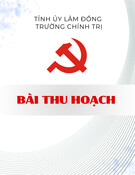
http://www.iaeme.com/IJM/index.asp 130 editor@iaeme.com
International Journal of Management (IJM)
Volume 8, Issue 6, Nov–Dec 2017, pp. 130–135, Article ID: IJM_08_06_014
Available online at
http://www.iaeme.com/ijm/issues.asp?JType=IJM&VType=8&IType=6
Journal Impact Factor (2016): 8.1920 (Calculated by GISI) www.jifactor.com
ISSN Print: 0976-6502 and ISSN Online: 0976-6510
© IAEME Publication
FACTORS AFFECTING CUSTOMER
SATISFACTION AND SERVICE QUALITY IN
THE BOUTIQUE HOTEL INDUSTRY OF
KOLKATA, WEST BENGAL
Devlina Das
Student, MBA, Future Business School, Kolkata, India
Udit Chawla
Assistant Professor, MBA, Future Business School, Kolkata, India
Prof. Santanu Ray
Director-Management Studies & Research,
Future Institute of Engineering & Management, Kolkata, India
ABSTRACT
The study is to examine customers’ perception of service quality and overall
satisfaction in the boutique hotel industry of Kolkata, West Bengal. The perceived
service quality of hotel attributes is to be examined and the factor structure of service
quality perception is to be determined. Some valuable insights on how customers rate
the service quality of a particular hotel may be provided by the result of quantitative
assessment of perceived service quality. The significant quality attributes can be
improved and service quality along with business performance can be enhanced with
the help of these findings. Such findings shall serve as a valuable model for hotel
managers. Our objective is to determine the factors related to hospitality, which lead
to customer satisfaction. In the study, 5 boutique hotels were identified in Kolkata,
West Bengal and surveys were undertaken on the different corporate customers who
visited these hotels. This study found out that customer satisfaction mainly depends on
2 broad dimensions, one is “REASONABLE & QUALITY FOOD” and other is
“GENERAL REQUIREMENTS & HOSPITALITY OF THE HOTEL”. It has
emerged from the study that the customers are preferring hotels especially with
reasonable & quality food and then gives importance to the hospitality of the boutique
hotels.
Key words: Customer satisfaction, Service quality, Hospitality.
Cite this Article: Devlina Das, Udit Chawla and Prof. Santanu Ray, Factors Affecting
Customer Satisfaction and Service Quality in the Boutique Hotel Industry of Kolkata,
West Bengal. International Journal of Management, 8 (6), 2017, pp. 130–135.
http://www.iaeme.com/IJM/issues.asp?JType=IJM&VType=8&IType=6

Factors Affecting Customer Satisfaction and Service Quality in the Boutique Hotel Industry of
Kolkata, West Bengal
http://www.iaeme.com/IJM/index.asp 131 editor@iaeme.com
1. INTRODUCTION
Hotel industry is all forms business relating to the provision of accommodation in lodging
food, drinks and various types of other services that are interconnected and are intended for
the public service. The primary purpose of hotels is to provide customers with food, shelter,
refreshment and similar services, facilities and goods offering on a commercial basis things
that are unavailable to people. Hotel as an institute and hotels as an industry exercise a crucial
role and impact on the economic growth of the country.
Farzad Sattari(1999) such strongly believe that food is one of the principal factors
affecting the hotel industry and subsequently the hotel industry. To survive in the first place,
every customer as an organism is in need of eating and drinking. Food impresses other aspects
such as travel agencies’ culinary program, the final price of hotels, culture assimilation and
many other components as Lacy and Douglass(2003) mentioned Every customer is a
voyeuring gourmand. The promotion of food variety and food quality as well as the
restaurants of an area enhance the attractiveness of that location. Food contribute significantly
on customer satisfaction and loyalty. Superior and desirable food quality, variety of food
products and reasonable price of the meals offered positively affect customer satisfaction with
the hotel and/or destination area. Hospitality is important in a business, especially in a hotel
industry. It directly affects a customers’ satisfaction and so will affect a business. The
hospitality industry is responsible for operation and staffing. The facilities should be excellent
in order to retain customers. Satisfied customers look for a memorable experience and
dynamic service where it counts. Satisfied and happy customers are loyal customers. Kukoyi
Ibraheem Adesina and Iwuagwu Chinonsa (1997) say that the goal of hotel industry is to
maintain a high level of customer satisfaction by providing their clients with value added
transaction through positive customer interaction.
Hotels monitor their employees and staff to make sure that they consistently abide by and
apply the rules of excellent customer service. They are taught and expected to listen, to be
patient, tolerant and above all helpful and efficient. The staffs’ communication skill
courteousness and efficiency, the willingness to assist guest at a times, addressable of
customers complaints, customers getting value for money spent and the overall customer
service delivery are some important aspects of hospitality in a hotel industry.
2. REVIEW OF LITERATURE
Customer satisfaction is a major aspect of how products and services supplied by a hotel meet
or surpass customer expectation. Rust and Oliver (1994) described customer satisfaction as a
cognitive and effective reaction to a service incident. Satisfaction or dissatisfaction results
from experiencing a service quality encounter and comparing that encounter with what was
expected. Bitner and Hubbert(1994) proposed definition of service quality as “ a consumers’
overall impression of the relative inferiority/superiority of the hotel and its facilities and
services. Hospitality is identified as the art of giving genuine care and kindness to a guest or
customer. Hospitality involves friendly treatment of guest and constitutes a very important
sector in the hotel industry. Hospitality industry covers travel, accommodation, food services,
conferences, leisure and recreation facilities. Hospitality is also called Hotel Management. It
includes human resource management, business management, quality management, financial
management, material management.
Panton (1999) comments that food and beverages play a very important role in the hotel
industry. The availability of multi-cuisines, tasty food in reasonable price attracts customer to

Devlina Das, Udit Chawla and Prof. Santanu Ray
http://www.iaeme.com/IJM/index.asp 132 editor@iaeme.com
a hotel and as such the food and beverage dimensions is an indicator of overall customer
satisfaction.
Customer are satisfied if food and beverage factor meets their expectations. Bitner, Booms
and Tetrault(2004) described accommodation service quality as the responsiveness of the
service personnel towards requests and complaints. As also, giving feedback and solutions in
a appropriate manner contributes to customer satisfaction. Rimmington and Yuksel (1998)
consider cleanliness of accommodation and the availability of resources supplied to customer
significant factors contributing to quality experience among the corporate customer. Kozak
and Rimmington(2000) said that destination appearance and attractions, facilities and services
offered, the hospitality, food and beverage dimensions impact the level of overall customer
satisfaction, leading to customers’ revisit intensions and recommending the hotel destination
to friends, family and acquaintances. V.S. Santosh(2001) proposed that customer satisfaction
is of utmost importance and it should be taken care with all kinds of hospitality. The
importance of hospitality industry as an instrument for economic development and
employment generation has been well documented the world over.
3. OBJECTIVE OF THE STUDY
To identify the factors determining customer satisfaction in the boutique hotels of Kolkata,
West Bengal.
4. METHODOLOGY
In the present study, five boutique hotels were selected on the basis of popularity in the state
of West Bengal. 100 samples were collected from the sites. Data collection was executed at
the hotels and informal discussions were made with the corporate customers. The hotels were
Casa Fortuna, The Senator, Astor, Barsana, and Niharika.
Initially, around 12 quality parameter were identified for measuring the quality of
accommodation. A small focused group interview was performed with 4 experts and finally 9
items were chosen for describing the hotels.( Appendix). Five point Likert scale was
introduced for the measurement of each item. Data after proper cleaning and validation was
used for a number of multivariate analysis to attain the objective of the study.
Analysis
The approximate Chi-Square statistic(Fig 1a.) is 1399.71 with 99 degrees of freedom, which
is significant at 0.05 level. The value of KMO statistic is 0.850 is also large and greater than
0.5. From (Fig 1b.) we can see that Factor 1(Reasonable & Quality Food) accounts for a
variance of 5.121, which is 56.898% of the total variance and likewise Factor 2(General
Requirements & Hospitality Of The Hotel) accounts for a variance of 1.417 , which is
15.743 of the total variance and thus the first two factors combined account for 72.641 %. In
the rotated factor matrix(Fig 1c.), Factor 1 has high coefficients for variables tasty food, price
and food variety. Therefore, this factor may be labeled as “Reasonable & Quality Food”.
Factor 2 has high coefficients for facility of hotel, cleanliness of hotel, appearance of hotel,
friendly hotel, reception service, reception efficiency. Therefore, this factor may be labeled as
“General Requirements & Hospitality Of The Hotel”. The R-Square value(Fig2a.) is 0.572
which indicates 57.2% of the total variation in the dependent variable, Satisfaction(OSAT),
can be explained by the independent variables, “Reasonable & Quality Food” and “General
Requirements & Hospitality Of The Hotel”. From the Anova Table (Fig 2b.)we can see that
the Regression Model predicts the dependent variable significantly well and it is statistically
significant as p value is less than 0.05. The Coefficient Table(Fig 2c.) helps to predict

Factors Affecting Customer Satisfaction and Service Quality in the Boutique Hotel Industry of
Kolkata, West Bengal
http://www.iaeme.com/IJM/index.asp 133 editor@iaeme.com
satisfaction from these two factors and from the table these factors are statistically significant
to the Regression Model. Therefore we can say that Satisfaction depends mainly on these two
factors and can be shown by the equation given below:-
OSAT=4.143+ 0.652*REASONABLE & QUALITY FOOD+ 0.383* GENERAL
REQUIREMENTS & HOSPITALITY OF THE HOTEL
5. CONCLUSIONS
Studies have proved that customer satisfaction may have huge impact on business results.
Customer satisfaction results in greater customer loyalty, thereby influencing revisit and
positive word-of-mouth. Satisfied customers are more likely to come back to their visited
hotels, often bringing new customers along. Understanding the customer satisfaction process
is very beneficial and significant for the improvement, development and expansion of hotel
industry. Proper management and planning is needed to maximize benefits and profits from
the hotel industry. Dealing with people is what hospitality business is all about. This model
will help in determining the important attributes related to the boutique hospitality which
builds customer satisfaction. All the stakeholders have to make sure that the significant
attributes tasty food, reasonable price and food variety should be taken care properly as these
play a very significant role towards customer satisfaction, thereby customer loyalty.
REFERENCES
[1] Barsky, J.D. (1992). Customer Satisfaction in the Hotel Industry: Meaning and
Measurement. Hospitality Research Journal, 16(1): 51-73
[2] Barsky, J.D. & Labagh, R. (1992). A strategy for customer satisfaction. The Cornell Hotel
and Restaurant Administration Quarterly. International Journal of Hospitality
Management 18 (1999)67-82
[3] Bolton, R.N. & Drew, J.H. (1991). A multi-stage model of customers' assessments of
service quality and value. Journal of Consumer Research, 17 (4), 375-384
[4] Belcher, L. M. (2004), Customer Satisfaction in the Hospitality Industry. Interdisciplinary
journal of contemporary research in business, vol. 1 (13)
[5] Choi, T. and Chu, R. (2001). Determining of hotel guests‟ satisfaction and repeat
patronage in the Hong Kong hotel industry. International Journal of Hospitality
Management. 20, 277-97.
[6] Caruana,A. (2002).Service loyalty: The effects of service quality and the mediating role of
customer satisfaction. European Journal of Marketing, Vol. 36( 7/8), 811-828
[7] Christian M. Rogerson (2012). Tourism–agriculture linkages in rural South Africa:
evidence from the accommodation sector. Journal of Sustainable Tourism. Vol. 20 (3)
477–495
[8] Danaher, P. J. & Mattsson, J. (1994). Customer Satisfaction during the Service Delivery
Process. European Journal of Marketing, Vol. 2, (5)
[9] Dimitriades, Z.S. (2006). Customer satisfaction, loyalty and commitment in service
organizations – Some evidence from Greece. Review of Business, 32(1)
[10] Dibb, S. and Simkin L. (2009) , Judging the quality of Customer Segments: Segmentation
Effectiveness.International Journal of Marketing.Vol. 2, (5)
[11] Francis, A. (2001).Research paper on Customer Satisfaction & Service Quality in the
Hotel Industry. Journal of Marketing, Vol. 2(.3)
[12] Fu, Y.Y. & Parks, S.C. (2001). The relationship between restaurant service quality and
customer loyalty among the elderly. European Journal of Marketing,20(1)

Devlina Das, Udit Chawla and Prof. Santanu Ray
http://www.iaeme.com/IJM/index.asp 134 editor@iaeme.com
[13] Mukhles Al-Abaneh(2009), Service Quality and its impact on customer satisfaction.
Interdisciplinary journal of contemporary research in business, vol. 4,(12)
[14] Thomas.S(2013), Linking customer loyalty to customer satisfaction and store image: A
Structural model for retail stores. Springer. Volume 40, (1–2), 15–25
APPENDIX
KMO and Bartlett's Test
Kaiser-Meyer-Olkin Measure of
Sampling Adequacy.
.850
Bartlett's Test of
Sphericity
Approx. Chi-
Square
1399.71
df
99
Sig.
0.000
Figure 1a
Total Variance Explained
Component
Initial Eigenvalues
Extraction Sums of
Squared Loadings
Rotation Sums of Squared
Loadings
Total
% of
Variance
Cumulative
%
Total
% of
Variance
Cumulative
%
Total
% of
Variance
Cumulative
%
1
5.121
56.898
56.898
5.121
56.898
56.898
3.383
37.587
37.587
2
1.417
15.743
72.641
1.417
15.743
72.641
3.155
35.055
72.641
3
.879
9.766
82.407
4
.626
6.954
89.361
5
.453
5.035
94.396
6
.215
2.389
96.785
7
.128
1.425
98.210
8
.097
1.076
99.286
9
.064
.714
100.000
Extraction Method: Principal Component Analysis.
Figure 1 b
Rotated Component Matrixa
Component
1
2
facilityhotel
.270
.924
cleanlinesshotel
.218
.907
appearancehotel
.216
.912
friendlyhotel
.478
.691
recpservice
.619
.088
tastyfood
.890
.283
price
.889
.275
foodvariety
.883
.262
recpefficiency
.392
.575
Figure 1 c.



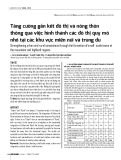
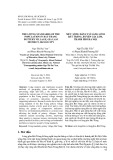
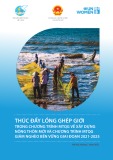
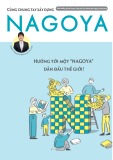
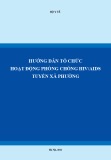
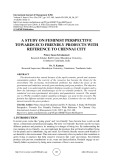
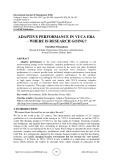
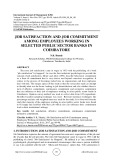
![Bài giảng Công tác xã hội: Khái niệm, phân biệt, quan hệ và chức năng [Chuẩn Nhất]](https://cdn.tailieu.vn/images/document/thumbnail/2025/20251002/littlehippy91/135x160/63461759457333.jpg)
![Tài liệu học tập Nhập môn Công tác xã hội [mới nhất]](https://cdn.tailieu.vn/images/document/thumbnail/2025/20251002/littlehippy91/135x160/50611759457334.jpg)
![Nội dung ôn thi Xã hội học đại cương [chuẩn nhất]](https://cdn.tailieu.vn/images/document/thumbnail/2025/20250930/kisu6910@gmail.com/135x160/12931759283279.jpg)
